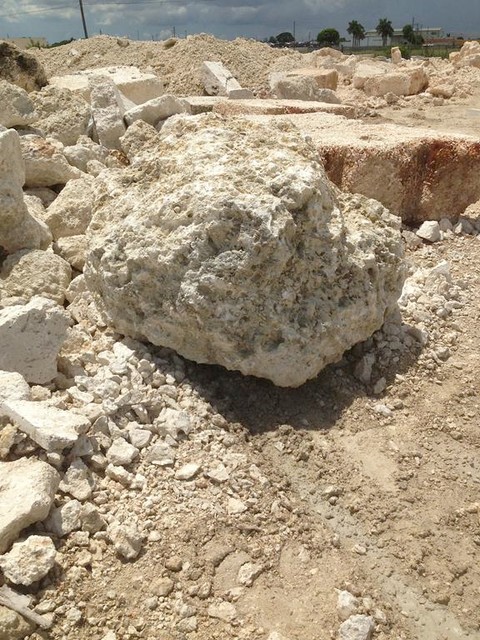

The bryozoan facies consists of white to orangish gray, sandy, fossiliferous limestone. The oolitic facies consists of white to orangish gray, oolitic limestone with scattered concentrations of fossils. The Miami Limestone consists of two facies: an oolitic facies and a bryozoan facies. The Miami Limestone or Miami Oolite occurs at or near the surface in southeastern peninsular Florida from Palm Beach County to Dade and Monroe Counties and in the keys from Big Pine Key to the Marquesas Keys. A narrow band of mangroves fringe the southeast coast, and the shallow waters of Florida Bay today provide an abundant food supply for great numbers of wading birds. South of the ridge sawgrass prairies take over again. In wetter areas near the end of the ridge, dwarf pond cypress grow. Where fire has been excluded, pines give way to hardwood hammocks. Pine forests are found on the high ground of the Atlantic Coastal Ridge. Miami Oolite also covers most of the area east of Everglades National Park and most of Florida Bay.Īs in most areas of South Florida, subtle changes in elevation result in dramatic changes in vegetation communities. The ooids later cemented into rock known as Miami Oolite. The Atlantic Coastal Ridge which runs from Mahogany Hammock northeast to Miami was formed as long shore currents pushed the ooids up into a long ridge. The resulting spherical grains of limestone are called ooids (named for their fish egg appearance). Calcium carbonate settling out of the water coated tiny bits of shell or sand in layer upon layer. The rocks beneath Southeastern Florida were formed in this sea. At its peak, the sea level in South Florida rose 100 feet above present levels. The last interglacial stage occurred about 100,000 years ago (The Pleistocene). During these warmer "interglacial" stages, the ice melted and returned to the sea.

The Great Ice Age was actually four shorter ice ages with periods of warming in between. Sea levels in South Florida lowered as much as 300 feet below present levels. As glaciers in other areas of the world expanded, much of the earth's water supply was trapped in the ice. Although no glaciers developed in Florida, their effects were felt here. Other rocks beneath South Florida were formed during the time of the Great Ice Age. Today this rock is called the Tamiami Formation. Sediments of silt and sand and particles of calcium deposited on the bottom of this sea gradually cemented into limestone. Six million years ago, a shallow sea covered this area. For example, the rocks beneath the Big Cypress Swamp are among the oldest in South Florida. The landscapes we see today in South Florida are a direct result of geologic events of the past. (Source material: ( visit link) and ( visit link) also: Land from the Sea by John Edward Hoffmeister) A Short Primer of the Geology of South Florida


 0 kommentar(er)
0 kommentar(er)
